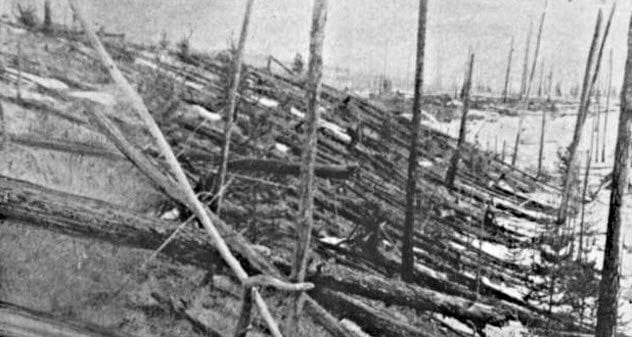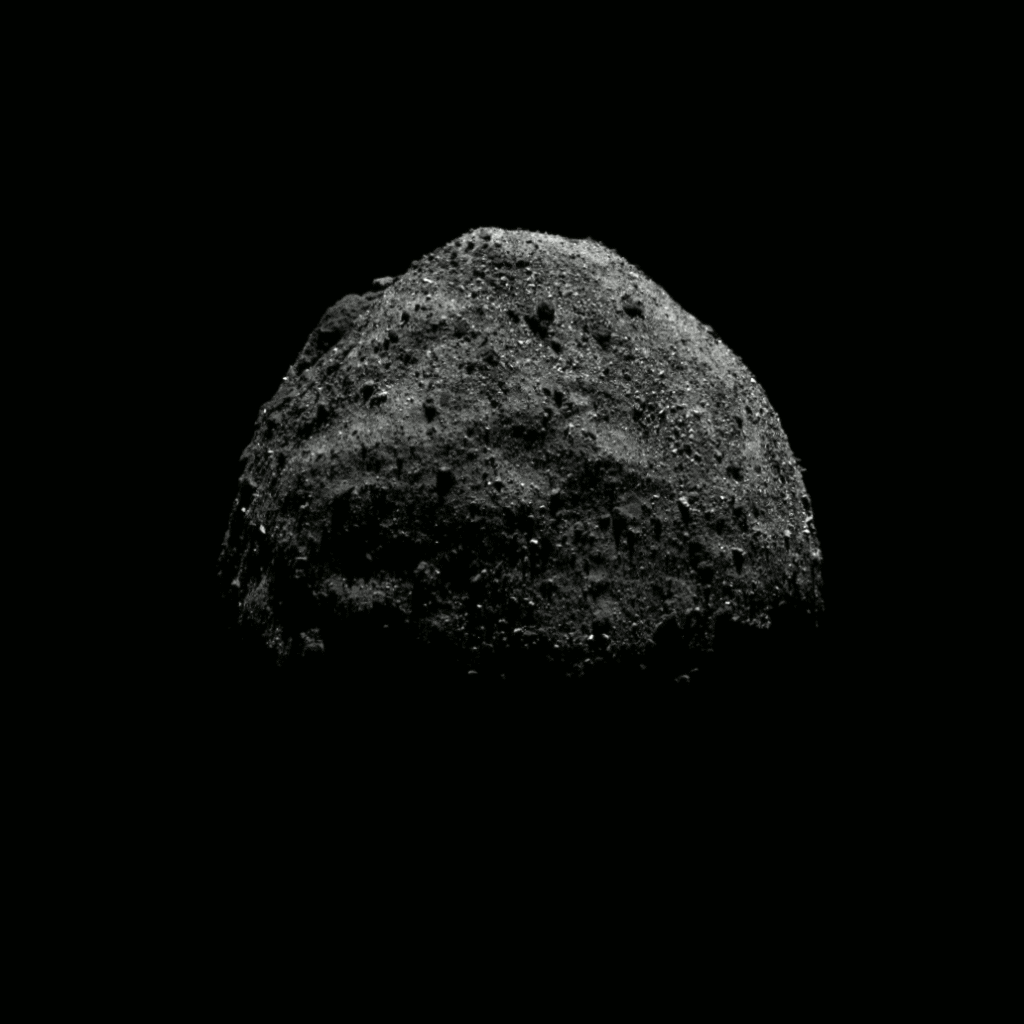 History
History  History
History  Animals
Animals Ten Times It Rained Animals (Yes, Animals)
 Mysteries
Mysteries 10 Devastating Missing Child Cases That Remain Unsolved
 Creepy
Creepy 10 Scary Tales from the Middle Ages That’ll Keep You up at Night
 Humans
Humans 10 One-of-a-kind People the World Said Goodbye to in July 2024
 Movies and TV
Movies and TV 10 Holiday Movies Released at Odd Times of the Year
 Politics
Politics 10 Countries Where Religion and Politics Are Inseparable
 Weird Stuff
Weird Stuff 10 Freaky Times When Famous Body Parts Were Stolen
 Miscellaneous
Miscellaneous 10 Interesting Things Manufacturers Stopped Making and Why
 Gaming
Gaming 10 Funny Tutorials in Games
 History
History 10 Desperate Last Stands That Ended in Victory
 Animals
Animals Ten Times It Rained Animals (Yes, Animals)
 Mysteries
Mysteries 10 Devastating Missing Child Cases That Remain Unsolved
Who's Behind Listverse?

Jamie Frater
Head Editor
Jamie founded Listverse due to an insatiable desire to share fascinating, obscure, and bizarre facts. He has been a guest speaker on numerous national radio and television stations and is a five time published author.
More About Us Creepy
Creepy 10 Scary Tales from the Middle Ages That’ll Keep You up at Night
 Humans
Humans 10 One-of-a-kind People the World Said Goodbye to in July 2024
 Movies and TV
Movies and TV 10 Holiday Movies Released at Odd Times of the Year
 Politics
Politics 10 Countries Where Religion and Politics Are Inseparable
 Weird Stuff
Weird Stuff 10 Freaky Times When Famous Body Parts Were Stolen
 Miscellaneous
Miscellaneous 10 Interesting Things Manufacturers Stopped Making and Why
 Gaming
Gaming 10 Funny Tutorials in Games
Top 10 Things You Should Know About Asteroid Collisions With Earth
Whew!! With 2020 in the rearview mirror and COVID vaccines rolling out, we might be able to do more in 2021 than sit in our recliners shaking our heads at Tiger King. And with the murder hornets hibernating, the wildfire season over, the Meth-gators in rehab, and the toilet paper shelves restocked, we just might see a break from global-changing events.
Not so fast. Just in time for spring, a massive rock roughly the size of the Golden Gate Bridge is going to do a drive-by, reminding us that fate still has a firm grip on our throats.
Top 10 Facts About Asteroid Mining
10 Asteroid 2001 FO32
On March 21, an asteroid estimated to be a mile in diameter (1.7 km) will pass within 1.3 million miles (2 million km) of Earth or about five times the distance between us and the moon (called a Lunar Distance or LD). At about three times the height of the Eiffel Tower, Asteroid 2001 FO32 is larger than 97 percent of the known asteroids in our solar system. If an asteroid that big should smash into Earth, it would be a global catastrophe.
If that wasn’t scary enough, Asteroid 2001 FO32 is classified as an Apollo-class asteroid which means it’s orbit crosses or intersects Earth’s orbit on a similar plane twice during its own 810-day orbit, raising the small possibility of a collision every 2.2 Earth years. NASA considers Apollo-class asteroids to be the most dangerous and classifies Asteroid 2001 FO32 as a Potentially Hazardous Asteroid (PHA).
Nor is Asteroid 2001 FO32 the only object whizzing by Earth this year. Or even the closest. Just in January alone, there were nine asteroids who were closer to Earth than the Moon. Two were discovered only after they had passed us.
9 What an Impact Would Like?
While the probability that Asteroid 2001 FO32 will dent Earth’s fender is very low, what would happen if it did? That depends on several variables including the asteroid’s size, composition, velocity and angle at impact, and where on Earth it impacts, whether on water or land. We don’t know the composition of Asteroid 2001 FO32 so we’ll say it’s a common porous rock with a typical density of 1500 kg per meter (11,000 lbs/ft). This asteroid is traveling at 21 miles per second (34 km/s), a little faster than the typical asteroid. Impacts are usually at a 45 degree angle as it enters the atmosphere and, for the purposes of this illustration, we’ll say it hits Europe – say Berlin—with a sedimentary rock crust.
The initial crater would be 10 miles (16.4 km) in diameter at a depth of 3.6 miles (5.8 km). Shortly afterward, however, the ground around the edges of the crater would collapse, enlarging the diameter to 15 miles (23.8 km). Essentially all of metropolitan Berlin would be a hole. The 447,000 megaton explosion (about 30 million times Hiroshima’s explosion) would cause an air blast that will travel faster than the speed of sound, overturning cars and knocking down steel-framed buildings all over Germany. The air blast would knock down wood-framed buildings as far east as Liv, Ukraine; as far north as Stockholm, Sweden; as far south as Venice, Italy; and as far west as Paris, France. This is followed by a cloud of searing hot vapor called a fireball, which will ignite trees, grass, and clothing all over Germany.
Virtually everyone in western Europe would feel the vibrations similar to those caused by the passing of a truck. There would be earthquakes and landslides everywhere. Worse, the impact would throw up enough debris – called ejecta – that will globally blot out the sun for weeks, making it darker than the darkest cloud cover. Temperatures world-wide would drop 46 degrees Fahrenheit (8 degrees Celsius) and summer would be canceled that year. There would be global crop failures followed by inevitable famine. Some plant life regionally would even go extinct. And acid rain would fall in western Europe for months.
The more likely scenario would be that the asteroid’s impact would be in one of the world’s oceans or seas – say the Atlantic Ocean – and the impact would blow a void in the ocean at least 11 miles (18 km) across and all the way to the seabed 3 to 4 miles down. Water rushes back in to fill the void, sending a ring of tsunamis in all directions. Unlike in the movies, there will not be just one mega-tsunami, but several in succession, 3 to 4 minutes apart. The first waves will be small, but the next ones could be 400 feet or higher. Worse, the explosion would vaporize seawater into the sky, with chemicals bromide and chloride destroying the ozone layer and its protection from the sun’s UV light. Humans might have to live indoors during the day to escape the solar assault.
8 Near-Earth Objects
The problem is that Asteroid 2001 FO32 is far from an anomaly. We now know rocks are flying all over our solar system. The year 1998 was a big year for asteroids. In March, the scientific community released a circular with flawed and unsubstantiated calculations that there was a chance Asteroid 1997 XF11 would collide with the Earth in October 2028. If it did, the half-mile (nearly 1 km) wide asteroid would devastate the planet. The media got hold of the circular and proceeded to set their own hair on fire, telling the world that humanity now had an expiration date. Within days, the experts reassured the public that the chances that Asteroid 1997 XF11 might threaten Earth were near zero. That summer saw not one but two blockbuster movies (Deep Impact and Armageddon) about world-killing asteroids.
The U.S. Congress was paying attention and turned to NASA that year to detect and catalogue our solar system’s Near-Earth Objects (NEOs), defined as comets and asteroids that come within 30 million miles (50 million km) of Earth or about 126 times the distance between us and the moon (LD’s). The Near-Earth Objects Observation Program—later renamed the Center for Near-Earth Objects Studies (CNEOS) was established.
Together with agencies, observatories and tracking stations all over the world, the initiative, as of October 2020, has discovered 888 globally-catastrophic NEO asteroids the size of Asteroid 2001 FO32 or larger. That’s about 96 percent of the estimated NEO asteroids of that size in the solar system.
Unfortunately, because they are smaller and harder to find, only about 20 to 30 percent of the thousands of regionally-catastrophic NEO asteroids (the size of a football field or greater) have been located and tracked. Such asteroids would have ground-level explosions measuring in the giga-ton range and would flatten a city, potentially killing millions. This means we still have no idea where the majority of our solar system’s deadly space chunks are located.
NASA decided some NEO asteroids – those that are at least 140 meters in size and miss the Earth by a mere 5 million miles (8 million km) or about 21 LD’s – needed special attention. They designated them Potentially Hazardous Asteroids and, as of January 2021, 2160 PHAs have been detected, about 9 percent of the 25,000 NEOs out there. Almost all of them are Apollo-class. About 150 or 7 percent of those asteroids are global devastators like of Asteroid 2001 FO32.
7 The Problem With the Number of Asteroids
We may have a detected and tracked asteroids the size of 2001 FO32, but we are far behind doing so for smaller versions. Part of the problem is the copious numbers of them. According to NASA, more than a million asteroids have been detected and tracked, but that is only a fraction of the millions out there. Most of them orbit the sun in the same direction the planets orbit and the majority of those are grouped in an orbit between Mars and Jupiter called the Asteroid Belt (although there are some in the Kuiper belt and possibly the distant Oort Cloud). It’s in the Asteroid Belt where the truly monstrous asteroids are located. There are 16 in the belt with diameters greater than 150 miles (240 km) such as Ceres (580 miles or 940 km), Vesta (326 miles or 525 km), and Pallas (318 miles or 512 km)
According to NASA, about 100 tons of dust and sand-sized pebbles burn up in our atmosphere every day. Between 1994 and 2013, NASA documented 556 separate asteroids – or meteors—ranging from 3 feet (1 meter) to 60 feet (30 meters) in size that also burned up in Earth’s skies and were observed by humans as a fireball. That’s an average of 28 fireballs a year and every one of them were undetected before their fiery demise.
But the number of unobserved asteroids/meteors impacts are much, much higher. Humans occupy only about .44 % of the landed area of the Earth or about .13 % of its total surface. Some experts estimate as much as 17 asteroids/meteors per day have the size or composition to survive the trip through our atmosphere and reach the Earth’s surface, most either splashing down in water or on uninhabited ground. That’s about 6,100 asteroid/meteors per year. And virtually all of them are undetected by NASA or the hundreds of telescopes pointed toward the sky. And occasionally those unseen asteroid impacts can be devastating.
6 The Tunguska Event

On the morning of June 30, 1908, seismometers all over the world registered a seismic event that, in some places, registered 5.0 on the Richter Scale. Windows all over Europe were broken. For several days afterward, the night sky was as bright as day in much of Europe and Asia. Observatories noted a marked increase in dust in the atmosphere, obscuring the heavens. But no one knew what the event was.
It would take nearly 20 years for Russian mineralogist Leonid Kulik to discover that a remote Siberian area in the Podkamennaya Tunguska River basin had been flattened. Some 80 million trees and some 830 square miles (2,100 sq km) of forest were destroyed. But there was no impact crater and very little meteor debris found. The prevailing theory is that a small asteroid or comet 150 to 300 feet (50 to 100 m) in size entered the Earth’s atmosphere and exploded 6 to 10 miles (10 to 15 km) above the Earth, creating a blast 185 times greater than Hiroshima and a fireball 164 to 328 feet (50 to 100 m) across.
To sum up: an asteroid or comet at least a tenth the size of Asteroid 2001 FO32 flattened an area about the size of Tokyo (city proper). A survey of observatories worldwide finds that well over 100 had been established by 1908 and presumably had their lenses directed skyward that June morning. And yet not one reported a rock about to collide with Earth.
5 The Problem with Small Asteroid Detection
We shouldn’t be too hard on all the eyeballs scanning the June 1908 sky. It would, after all, take exactly a century for humans to successfully detect an incoming asteroid and pin-point where and how it would impact with the Earth. That asteroid was called 2008 TC and it was discovered 20 hours prior to its arrival by the Mt. Lemmon Observatory near Tucson, Arizona.
On October 6, 2008, Mt. Lemmon reported the sighting to the Minor Planet Center (MPC) at Cambridge who first ascertained whether this was a previously discovered asteroid or a new one. It then made a preliminary computation of Asteroid 2008 TC’s orbit to find it would impact with Earth the next day. MPC notified the NASA/JPL’s NEO Observation Program. While NASA the alarm world-wide, JPL determined that Asteroid 2008 TC would enter Earth’s atmosphere over the Nubian desert in the Sudan. Some 26 observatories around the world directed their lenses at the incoming visitor and determined it was about 2-5 meters in diameter and predicted it would explode 23 miles (37 km) above the ground. Asteroid 200 TC entered the atmosphere a 10th of a second later than predicted, but its 1 kiloton explosion was exactly on-time at precisely the latitude and longitude predicted.
But what if Mt. Lemmon had been out of service? For instance, the scientific community was dismayed last November when the famous, iconic Arecibo Observatory in Puerto Rico collapsed. As the second largest single-dish telescope, the 50-year-old facility played an integral part in our defense against asteroid impacts. It’s loss will not easily be replaced. Or what if Mt. Lemmon was studying a different section of the sky that day? Or visibility was impaired? One draw-back of using Earth-based observation platforms is they are limited to viewing the skies on cloudless nights. What if Asteroid 2008 TC approached Earth with Tucson on the day –side of the Earth. Or on a cloudy night? Which may explain why we have not gotten any better in detecting asteroids since 2008.
The U.S government has installed infrasound sensors all over the world meant to detect the detonation of nuclear weapons. They also record asteroid impacts, which do not, of course, include asteroids that splash down in water. In 2008 when Asteroid 2008 TC impacted, there were 34 other impacts that were undetected. We didn’t have another success until 2014 when 2014 AA splashed into the Atlantic. That year there were 33 undetected land impacts. Another success was in 2018 when 2018 LA impacted in Botswana, Africa. Thirty-eight other asteroids however impacted without being detected. In the 11 years from 2008 to 2018, there were 3 impactors detected out of a total of 367 impacts. That’s a less than 1 percent success rate.
4 The Problem of Seeing Asteroids

Asteroids reflect sunlight and when seen against the space scape, has the appearance of a star (called a chalk albedo). Until it moves. The smaller the asteroid, the less it reflects sunlight (has a charcoal albedo), and is thus harder to see at great distances. A small asteroid will need to be very close to Earth to be seen. We’ve already talked about the limitation of ground-based telescopes to viewing only on cloudless night, but most of the observatories in the world are in the Northern Hemisphere, largely because most of the world’s land mass is in that hemisphere. This means fewer eyes are monitoring from the Southern Hemisphere. But that also means those observatories share a sky with 90 % of the world’s population, a pollution producing population. This greatly reduces the likelihood an incoming asteroid will be seen.
Space-based telescopes such as Hubble are not limited to night viewing, and are not affected by pollution or clouds. But orbiting telescopes have the same problem seeing smaller asteroids. This is why both land-based and space-based eyes are now scanning the heavens with infrared. Such telescopes can see the heat from the sun baking on these asteroids. The draw-back is that when these asteroids come between Earth and the sun, infrared has difficulty differentiating between the Sun’s heat signature and the asteroid’s. This was never better demonstrated than when an asteroid exploded over Chelyabinsk, Russia in 2013.
3 The Chelyabinsk Meteor
On the day after Valentine’s Day, 2013, astronomers were polishing the lenses of their telescopes in anticipation of the close fly-by of Asteroid 2012 DA14. The 150 foot (45 m) rock would skirt the planet so closely, it would actually be significantly closer to Earth than its communication satellites circling in geosynchronous orbits. So enthralled was the world that day, everyone’s telescopes were pointed the wrong way.
Early that morning there were reports that another asteroid, this one about 65 feet (20 m) in size with the mass greater than the Eiffel Tower, had exploded 14 miles above the town of Chelyabinsk in the southern Urals. The explosion was estimated at 500 kilotons, some 20 to 30 times that of Hiroshima, and 30 times brighter than the Sun. The shock wave shattered windows for 200 square miles (518 sq/km) and people were knocked from their feet. Of the 1500 people injured, at least one person lost skin from their face from radiation. Remarkably there were no fatalities.
As the first verifiable impact in history that resulted in injury (there was no evidence anyone was injured in the Tunkuska Event), the world was a shaken, doubly so because everyone was taken completely by surprised. Despite the fact that this asteroid was 4 to 10 times bigger than the asteroid detected in 2008 (2008 TC), the experts claimed it was too small to have been seen. They added that this asteroid came out of the East, the sun behind it, making it difficult to detect either visually or by infrared.
2 The Problem With Predicting Impacts
If you are taking solace from expert pronouncements like “Asteroids similar to the one that killed off the dinosaurs 66 million years ago hit the Earth only once every 100 million,” you may be disappointed. Such numbers are merely averages. It’s like you’re driving down the road and pass a fatal car accident and think that since there’s a fatal car accident every 16 minutes, you’re safe for the next 16 minutes. That’s certainly not true, especially if you’re rubber necking at 70 miles per hour. The next big asteroid could rain down on us one hour from now. Or in a month. Or in 150 million years.
Let’s take a closer look at those averages. According to the experts, the dinosaur extinction asteroid was estimated to be 30 miles (10 km) in size and, on average, comes around every 100 million years. A 15 mile (5 km) asteroid comes around every 30 million years. A 3 mile (1 km) rock like Asteroid 2001 FO32 will impact Earth every 700,000 years. A 150 foot (50 m) asteroid like the one that flattened Tunkuska comes around every 2,000 years. The rocks the size of the Chelyabinsk asteroid (65 feet or 20 m) make an appearance every two centuries. And a 16 foot (5 meter) asteroid visits every two years. But, with the exceptions of Tunkuska and Chelyabinsk, we don’t know for sure when the last large asteroid came to visit. We have no idea if we are well over due. Worse, the sample size in these averages are, at best, a whopping one. It’s hard to have confidence in averages with such a small sample.
As for probabilities a specific asteroid will impact Earth, they are based upon multiple observations and orbit calculations over time. The more observations, the more reliable the prediction of its threat. For instance, a small (26 foot, 8 m) asteroid named 2017 WT28 has a 1 % chance of impacting Earth in November of 2104. This is based on a respectable 28 observations (and orbital calculations) over 19 days. The NEO Asteroid 2010 WC9 was discovered in 2010, but was lost that same day after it grew too faint to track. Then the 330 foot (100 m) asteroid suddenly reappeared in May 2018, winging by at half the distance between us and the Moon (.5 LD). There are nearly 1,000 such NEO asteroids who were briefly observed, then disappeared. Some 130,000 asteroids weren’t even observed (or their orbit calculated) long enough to receive a provisional designation or determine if they threatened Earth. While most of these so called “lost” asteroids are small, dozens are greater than 1,300 feet (400 m).
A further complication is that probabilities assume the orbits of these asteroids will not change. Consider Asteroid 4179 Toutatis, a 1.5 mile (2.5 km) monster that came just 4 LD’s of Earth in 2004, the closest approach of any asteroid this size this century. But it has an incredibly complex and chaotic orbit, affected by the gravity of both the Earth and Jupiter. It’s orbit is so chaotic, experts cannot accurately predict it’s danger to Earth beyond a few centuries.
1 The Problem of Stopping or Diverting an Asteroid
Experts have come up with a number of ways we can rescue our planet from a rock barreling down us, and almost all of them start with sending a ship to intercept the asteroid and end by moving it off its collision course. One idea is that the ship could use its own gravity (everything that has mass also has gravity) to tow the rock off course. Or act as a tug, sidling up to the side of the rock and pushing it off course. Or it could attach a mass driver to the asteroid, which would then hurl the asteroid’s rocky debris into space and – using Newton’s Law of Action-Reaction – send the asteroid in the opposite direction of the driver’s throw. Or it could superheat the asteroid’s substrate with solar mirrors or lasers, using the ensuing jets of steam to push the rock off course. Or you could just nuke it into oblivion. The last option is actually the least likely to succeed. It would be better to explode the nuke near the asteroid and let the blast and heat to push it where you want it to go.
NASA and the European Space Agency (ESA) are working on two versions of what’s known as a kinetic impactor. They got the idea from the 2005 Deep Impact mission (not to be confused with the movie) where a spacecraft rendezvoused with the comet Tempel 1, then sent a kinetic impactor into the comet to see what was beneath its surface. The unintended result was that it slightly altered Tempel 1’s trajectory.
In July of this year, NASA will launch its Double Asteroid Redirection Test (DART). Fourteen months later DART will smack into the small moonlet that orbits the NEO Didymos asteroid at 1.5 miles per second (6.6 km/s). Yes, even some asteroids – called a binary asteroids—have moons. About a sixth of all NEO asteroids are binary or multiple-body systems. The collision will only change the moonlet’s speed a fraction of percentage, but it will be enough for Earth’s telescopes to see that a kinetic impactor would work. The ESA version was called Don Quijote (as in Don Quixote tilting at windmills) and would have had two spacecrafts, Sancho and Hidalgo. Sancho would have been launched first and arrive off the target asteroid to survey it for the proper impact site. It would then transmit the coordinates to the Hidalgo impactor just before it hits. Unfortunately, Don Quijote is still in the development stage.
DART and Don Quijote built upon already developed technology which makes them viable for missions in the near future. But the other ideas are barely more than ideas. Even if they were developed, all the solutions will need months – if not years or decades – to be put into space. Which means we’ll need a substantial warning for them to be successful. But, as we have discussed, we may not have a warning – substantial or otherwise.
10 Amazing Discoveries Involving Asteroids
About The Author: Steve is the author of the New York Times Bestseller “366 Days in Abraham Lincoln’s Presidency” and a frequent contributor to Listverse.








